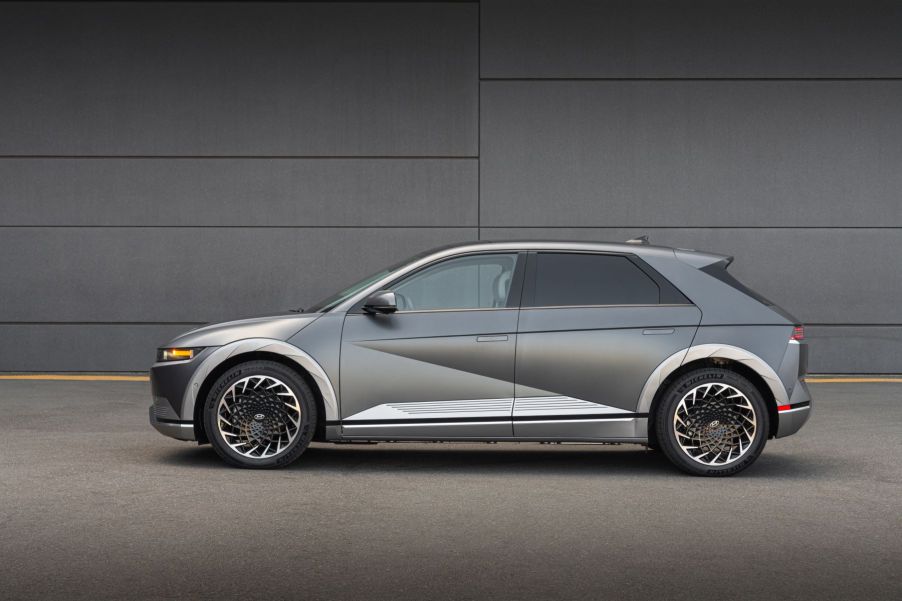
New Study Finds Basically Everyone Would Save Money on Fuel Owning an EV
One of the major selling points of electric vehicles (EVs) is that they might save you money in terms of refueling, as electricity costs less than gasoline. There’s been renewed interest among some consumers recently as gas prices have soared. However, with public charging stations sometimes charging high electricity rates, is it really true that car owners can save money if they own an EV?
How likely is it that people can save with an EV?
While the higher purchase price has kept some prospective buyers away, the MSRP difference between internal combustion engine (ICE)-powered vehicles and EVs has dropped over the years. Government incentives have also reduced the overall price of today’s electric cars. Additionally, some companies like Tesla are drastically reducing costs to navigate choppy economic waters.
However, fuel costs have sparked renewed EV interest in some quarters. When you think long-term, high fuel costs can be the difference between a car you love and one you regret. With average national gas prices as high as $4.99 in 2022, lower fuel costs are definitely at the top of mind for many drivers.
To dig into whether vehicle owners might save money on fuel costs with a new EV, Yale Environment 360 cites a recent study, “Mapping Electric Vehicle Impacts: Greenhouse Gas Emissions, Fuel Costs, and Energy Justice in the United States.” Appearing in the academic journal Environmental Research Letters, the study found that a whopping 90% of U.S. vehicle owners would save money on fuel if they bought an EV rather than an ICE-powered vehicle.
What else did researchers learn about fuel cost savings?
In addition to this finding, researchers also learned that 71% of drivers would see a 50% decrease in fuel expenses if they switched to a gas-powered vehicle. Conversely, only 0.02% of drivers would save the same amount by switching from an ICE vehicle to an EV.
Unsurprisingly, drivers in California and New York (along with Washington state) would benefit the most in fuel cost savings and emissions reductions. These states are home to some of the largest and most densely populated metropolitan areas in the U.S. Furthermore, these states have relatively clean power grids and a substantial gap between electricity and gas costs.
Phys.org highlighted another finding of the study: switching to EVs would double the number of U.S. households with what’s considered low transport costs. Across the country, consumers take over 80% of their trips in their cars, with 67% of drivers spending more than 2% of their income on transportation. Annual transportation costs above the 2% threshold are considered high.
The study found that 80% of vehicle-owning households would see transportation costs drop below that threshold if EVs replaced ICE vehicles. That’s a substantial amount of drivers enjoying significant savings. However, the researchers did note prominent regional differences in gas and electricity prices and stressed the need for multifaceted regional approaches to national EV adoption.
What are other factors to account for if considering an EV?

Just as the study stressed the need to account for multiple factors when assessing potential cost savings, you should too. It may be tempting to run out and trade your gas guzzler for an EV right now, but it’s best to run the numbers yourself to figure out how much you may save – and what you can afford.
Start with the latter first. You’ll want to determine whether you can afford a new EV and whether you plan to trade your current vehicle in or not. EV prices have come down, but they’re still a bit more expensive than an ICE vehicle. Additionally, government incentives come well after the purchase in the form of tax credits. So, you’ll want to determine whether you can afford an EV’s upfront costs first.
You’ll also want to crunch the numbers about EV fuel costs. Chances are you’ll see some savings. However, the savings may not be enough to justify an EV purchase if you live in an area with high or variable electricity prices or an unreliable electricity grid. Furthermore, if you don’t drive all that often, the savings may not be worth it to you.
Finally, consider your needs. Can you find an EV that’s suited to your intended use? One area that many EVs haven’t fully matched up to ICE vehicles yet is in hauling and towing. Payloads and trailers take a substantial toll on EV batteries and may not be able to handle what you have to transport. There are other key differences between the two types of vehicles that you may want to consider that may outweigh fuel cost considerations.



